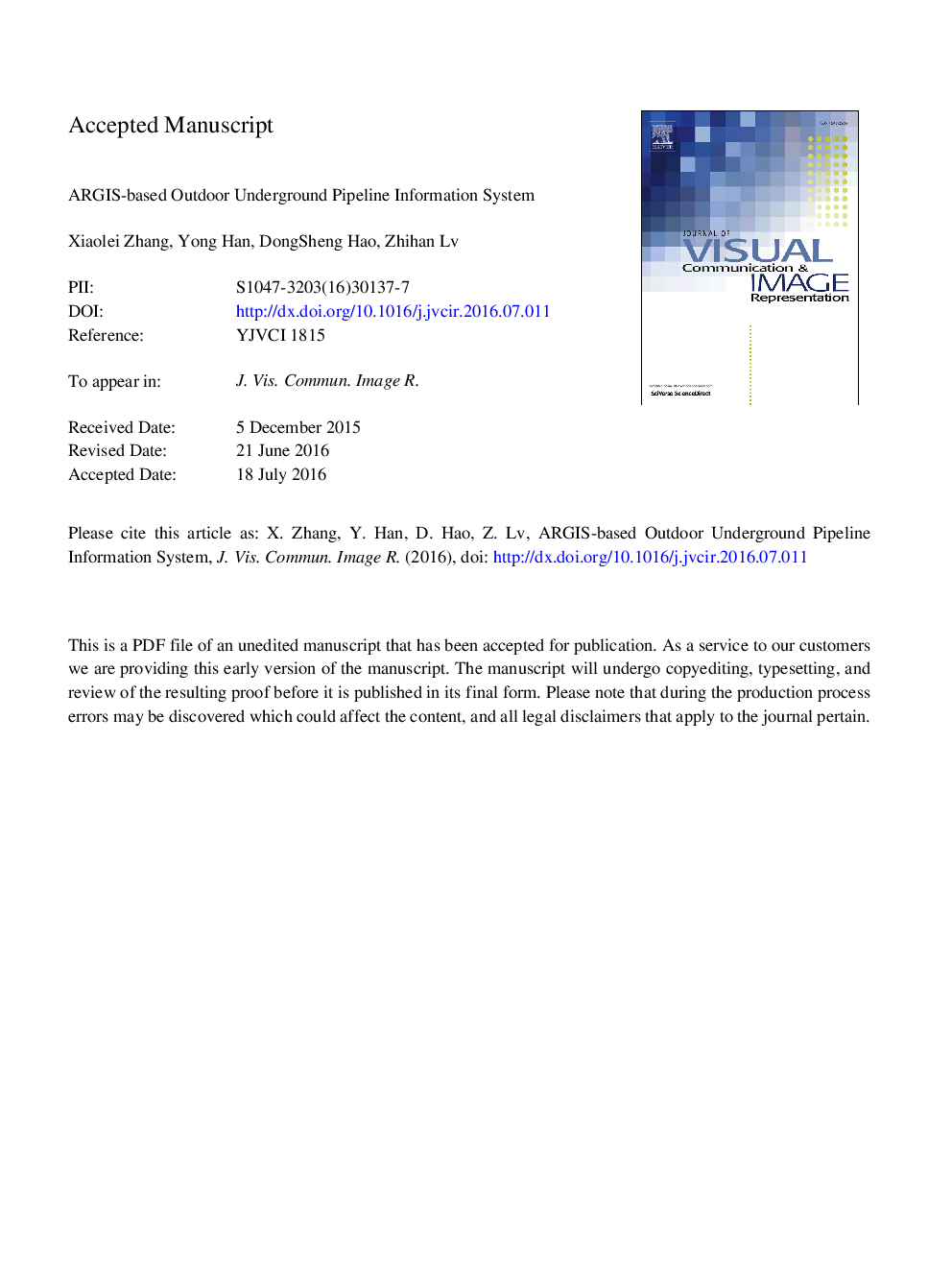| Article ID | Journal | Published Year | Pages | File Type |
|---|---|---|---|---|
| 6938509 | Journal of Visual Communication and Image Representation | 2016 | 24 Pages |
Abstract
Outdoor augmented reality geographic information system (ARGIS) is a hot topic of augmented reality application over recent years. This paper tackles the key issues of ARGIS, designs the mobile augmented reality based underground pipeline information system, and respectively realizes the computer vision based version (CV-version) and the sensor based version (Sensor-version). The CV-version system employs the neural network based 3D features matching method. After comparison and evaluation of the two versions as well as interviewing the domain exports' opinions on the proposed system and the traditional PC-version virtual reality pipeline information system, it indicates that the CV-version is better in virtual-reality fusion and interactive experience and that Sensor-version is better in environmental robustness; PC-version virtual reality pipeline information system is more macroscopic in demonstration communication and this system is more assistant in the site survey of urban underground pipelines. To sum up, taking the underground pipeline information system as an example, this paper studies the characteristics of two different techniques of computer vision and sensor fusion in ARGIS, and makes a detailed comparison of these two techniques from two aspects of performance parameters and user experience. Some guiding conclusions are drawn, which provides a new way for the research of the application system in the field of outdoor geographic information system.
Related Topics
Physical Sciences and Engineering
Computer Science
Computer Vision and Pattern Recognition
Authors
Xiaolei Zhang, Yong Han, DongSheng Hao, Zhihan Lv,
